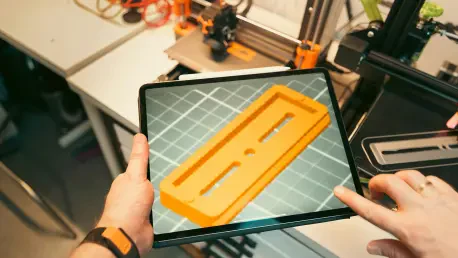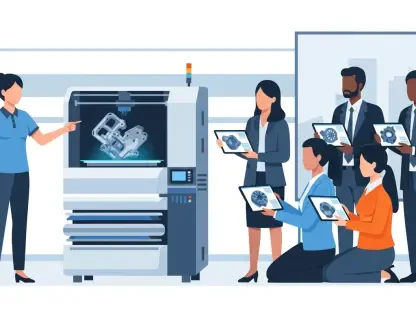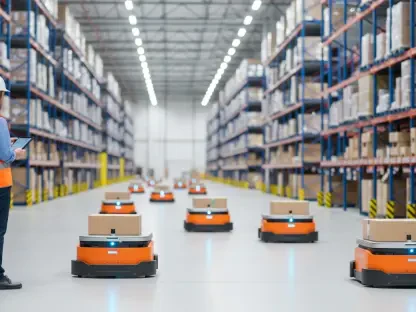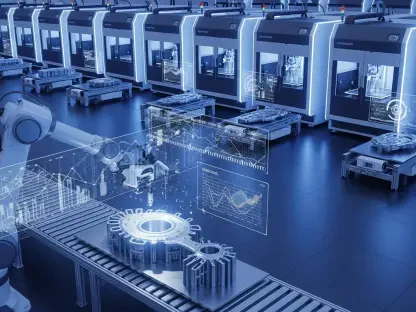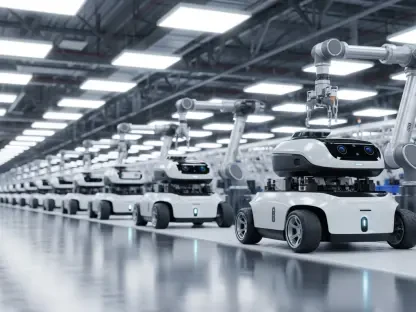In a striking development that could reshape the additive manufacturing landscape, Arc Impact Acquisition Corporation has stepped in to rescue Desktop Metal, a company once celebrated as a pioneer in 3D printing but recently mired in financial distress. This acquisition, finalized for a mere $7 million, marks not just a lifeline but a bold reimagining of Desktop Metal’s future. After grappling with significant losses and a bankruptcy filing following its 2020 public debut through a SPAC merger, the company is now poised for a dramatic turnaround. Arc’s vision is ambitious: to transform Desktop Metal into a frontrunner in AI-driven, U.S.-based advanced manufacturing. By honing in on cutting-edge technologies and addressing critical supply chain needs, this revival aims to position the company as a key player in industries like defense, energy, and healthcare. The strategic pivot away from past missteps toward a focused, innovative approach is generating considerable interest in the sector.
Harnessing Technology for a New Era
The cornerstone of Arc’s plan to revitalize Desktop Metal lies in leveraging advanced technologies that were previously underutilized due to a lack of supporting infrastructure. Binder jetting for metals and ceramics, paired with Adaptive3D’s innovative polymer materials, forms the backbone of this technological resurgence. What elevates this strategy is the integration of artificial intelligence, digital twins, and large language models. Bryan Wisk, Arc’s CEO, has pointed out that while Desktop Metal’s hardware was revolutionary, the absence of mature software tools hindered its full potential. Today, AI advancements offer a pathway to overcome those barriers, enabling production-ready platforms that can tackle complex manufacturing challenges with precision and efficiency. This isn’t merely about updating equipment; it’s about redefining how additive manufacturing can meet modern industrial demands through smarter systems.
Beyond the hardware, the focus on AI signals a broader shift toward intelligent manufacturing processes. This approach promises to streamline everything from material discovery to production scalability, addressing historical shortcomings that slowed Desktop Metal’s market penetration. By embedding AI-driven insights, the company aims to optimize workflows, reduce errors, and accelerate innovation cycles. This technological leap is particularly significant for industries requiring high precision, where even small improvements can yield substantial gains. The renewed emphasis on software and simulation tools alongside physical tech positions Desktop Metal to not only compete but lead in a rapidly evolving field. As Arc pushes forward with this integration, the potential for transformative impact across critical sectors becomes increasingly tangible, setting a new standard for what additive manufacturing can achieve.
Redefining the Business Approach
Arc is steering Desktop Metal away from its earlier hardware-heavy sales model toward a more balanced and customer-oriented strategy. While hardware remains a component, it will now be tailored to specific client requirements, supported by comprehensive services to ensure successful implementation. This shift also introduces R&D-as-a-Service and contract manufacturing, particularly for high-stakes industries such as defense, energy, and healthcare. Unlike the previous approach that led to overexpansion and financial strain, this model prioritizes solving real-world problems over simply pushing products. The goal is to create lasting value by aligning offerings with the precise needs of customers, ensuring that each solution delivers measurable impact rather than contributing to operational bloat.
This strategic overhaul reflects a deeper understanding of market dynamics and customer expectations. By focusing on bespoke solutions and service integration, Desktop Metal aims to build stronger, more sustainable relationships with its clients. The emphasis on contract manufacturing for critical applications further underscores Arc’s intent to position the company as a trusted partner in addressing complex challenges. This isn’t just about selling machines; it’s about embedding Desktop Metal into the operational fabric of industries that shape national and global priorities. Such a pivot requires not only a change in offerings but a cultural shift within the organization to prioritize long-term success over short-term gains. As this new direction takes hold, the potential for Desktop Metal to redefine its role in additive manufacturing grows significantly.
Streamlining Leadership and Operations
At the helm of Desktop Metal’s transformation is Thomas Nogueira, a seasoned insider and former Chief Operating Officer, now serving as CEO under Arc’s ownership. Joined by key figures like Rick Lucas as Chief Growth Officer and Jonah Myerberg as Chief Innovation Officer, the leadership team brings a wealth of experience and continuity to the table. Arc is also implementing a significant operational downsizing, reducing the company’s sprawling global presence of over 40 locations and 1,400 employees to a more focused structure. The primary base in Burlington, Massachusetts, alongside a polymer-focused operation in Texas for Adaptive3D, reflects a deliberate move to concentrate efforts on core technologies like binder jetting and advanced materials. This restructuring aims to enhance efficiency and sharpen strategic focus.
The operational consolidation goes hand in hand with a renewed commitment to leveraging internal expertise for innovation. By trimming excess and honing in on high-value areas, Desktop Metal can allocate resources more effectively to research and development. The leadership’s deep ties to the company’s history provide an intimate understanding of past challenges, enabling informed decisions to avoid similar pitfalls. This leaner structure is designed to foster agility, allowing the company to respond swiftly to market needs and technological advancements. Furthermore, the focus on a smaller, more cohesive team is expected to improve communication and decision-making, critical factors for a company seeking to rebuild its standing. As these changes unfold, the streamlined approach positions Desktop Metal to execute its ambitious vision with greater precision and impact.
Prioritizing U.S.-Based Manufacturing
A defining element of Arc’s strategy for Desktop Metal is a strong commitment to reshoring high-tech manufacturing to the United States. CEO Bryan Wisk has emphasized the importance of localized, automated production as a means to enhance national security and economic resilience. This focus targets industries with significant supply chain vulnerabilities, including defense, where projects involve aluminum parts for U.S. Army vehicles, and energy, with innovations like rare-earth-free magnets. Healthcare applications, such as specialized cushioning for Veterans Affairs, also play a role. This alignment with national priorities reflects a broader movement to reduce reliance on foreign manufacturing and bolster domestic capabilities in strategic sectors.
The push for U.S.-based production isn’t just about economics; it’s a response to geopolitical and security concerns that have intensified in recent years. By establishing a robust manufacturing presence within the country, Desktop Metal can help mitigate risks associated with global supply chain disruptions. This initiative also positions the company as a key contributor to strengthening critical infrastructure, from military readiness to energy independence. Partnerships with entities like the U.S. Army and Northrop Grumman for high-energy laser optics underscore the practical impact of this strategy. As Desktop Metal ramps up its domestic operations, the ripple effects could extend beyond immediate clients, fostering a more resilient industrial ecosystem. This commitment to reshoring stands as a testament to Arc’s vision of manufacturing as a pillar of national strength.
Restoring Confidence Among Clients
Rebuilding trust with customers is a top priority for Desktop Metal’s new leadership under Arc. Thomas Nogueira has stressed the importance of transparency, engaging directly with clients to understand their needs while reflecting on past successes and failures. Encouragingly, Bryan Wisk has noted unsolicited support from clients following the acquisition, signaling that the company’s technology and team still command significant respect within the industry. This customer-centric approach is essential for repairing Desktop Metal’s reputation, which took a hit during its financial struggles. By prioritizing open communication and tailored solutions, the company aims to reestablish itself as a dependable partner in additive manufacturing.
This focus on customer engagement extends beyond mere dialogue to actionable outcomes. Desktop Metal is working to ensure that its offerings directly address client pain points, whether through customized hardware or integrated services. The positive feedback received post-acquisition suggests a latent trust in the company’s potential, which Arc is keen to capitalize on. Rebuilding relationships also means demonstrating reliability through consistent delivery and innovation, areas where past performance fell short. As these efforts progress, the emphasis on listening and adapting to customer feedback could serve as a foundation for sustained growth. The journey to restore confidence is ongoing, but early signs indicate that Desktop Metal is on a promising path under Arc’s guidance.
Targeting Strategic Sectors with Impactful Projects
Arc’s vision for Desktop Metal includes a sharp focus on industries with pressing needs, where additive manufacturing can make a tangible difference. Current initiatives span defense, with collaborations on aluminum components for U.S. Army ground vehicles, and partnerships with Northrop Grumman for Silicon Carbide optics used in high-energy lasers. In energy, projects involve developing rare-earth-free magnets and solid-state transformer parts, while healthcare efforts include innovative FreeFoam cushioning for Veterans Affairs. These targeted projects not only highlight Desktop Metal’s technical capabilities but also underscore its role in addressing critical gaps in U.S. supply chains, aligning with national priorities for security and innovation.
The significance of these initiatives lies in their potential to solve real-world challenges with far-reaching implications. Defense applications, for instance, directly contribute to military preparedness, while energy projects support sustainability and independence from scarce resources. Healthcare innovations improve quality of life for veterans, showcasing the broader societal impact of additive manufacturing. Each project serves as a proof point of Desktop Metal’s relevance in high-stakes environments, where precision and reliability are non-negotiable. By focusing on such strategic sectors, Arc ensures that the company’s revival isn’t just about survival but about leadership in areas that shape the future. This targeted approach could redefine how additive manufacturing is perceived and applied across industries.
Envisioning a Future of Groundbreaking Advances
Looking to the horizon, Desktop Metal under Arc’s stewardship is setting its sights on pioneering innovations that could redefine industry standards. Long-term goals include the development of rare-earth-free magnets and next-generation battery components, addressing critical needs in sustainability and technology. Bryan Wisk has highlighted the decision to remain private, allowing the company to focus on deep tech investments without the pressures of public market expectations. This strategic choice underscores a commitment to sustainable growth over quick returns, positioning Desktop Metal to tackle ambitious projects that require time and resources to mature. The vision is clear: to lead rather than follow in the additive manufacturing space.
This forward-looking approach also considers the broader implications of technological advancement for national and global challenges. Innovations in battery materials, for instance, could play a pivotal role in advancing clean energy solutions, while rare-earth-free magnets reduce dependence on limited resources. By aligning research and development with these pressing issues, Desktop Metal aims to carve out a niche as a problem-solver on a grand scale. The freedom from public market scrutiny provides the flexibility to pursue such long-term objectives, fostering an environment where risk-taking in innovation is encouraged. As these initiatives take shape, the potential for Desktop Metal to influence not just manufacturing but also environmental and economic landscapes becomes increasingly apparent, marking a bold chapter in its journey.
Reflecting on a Transformative Journey
The story of Desktop Metal’s revival under Arc Impact Acquisition Corporation has unfolded as a remarkable turnaround, blending financial restructuring with visionary ambition. The acquisition tackled the company’s past struggles head-on, shedding non-essential assets while zeroing in on high-potential technologies. Leadership navigated a path of simplification and customer engagement, ensuring that lessons from previous setbacks shaped a more focused strategy. The integration of AI and a commitment to U.S.-based manufacturing emerged as defining pillars, positioning Desktop Metal to address vital national needs. Looking back, this transformation highlighted how strategic intervention could breathe new life into a struggling pioneer, setting a precedent for resilience in the additive manufacturing sector. Moving forward, stakeholders can anticipate further advancements by monitoring partnerships in defense and energy, while exploring how localized production might inspire similar efforts across industries.
